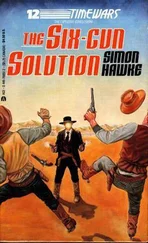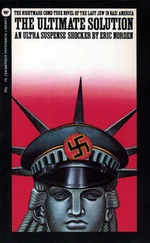Another negative and unpublicized fact about Pahnke’s original experiment was that one of the psilocybin subjects had to have a shot of chlorpromazine (an antipsychosis drug) to combat some unwelcome symptoms. It seems that the student took the words to a sermon about the Christian need to spread the word rather too literally, a struggle ensuing as he tried to leave the chapel. I would point out that such impractical messianic zeal can be countered by administering some self-control rather than chlorpromazine, though we must bear in mind that these theology students were essentially naive to psilocybin’s psychological effects. The more prepared one is to receive psilocybin in terms of an awareness of its scope of effect, the more likely will the ensuing experience be wholly positive and trouble free.
Despite the unearthed downsides, at the end of his follow-up study, Doblin concluded that: “All psilocybin subjects participating in the long-term follow-up, but none of the controls, still considered their original experience to have had genuinely mystical elements and to have made a uniquely valuable contribution to their spiritual lives.” {15} 15 6. Ibid., 23.
And there you have it, straight from the mouths of practicing ministers. Psilocybin doth work, and it doth work well. Human consciousness is positively mutable and reality is up for reinterpretation. Amen.
Leary Begins to Spread the Good News
During the early days of the psilocybin project, Leary actually got to meet Wasson. Although both had received the sacred mushroom vision and had come to value the experience as highly significant, their attitudes toward its use were glaringly opposed. According to Leary, Wasson tried to come across as the authority on mushrooms, more interested in his own experiences than those of Leary and his associates. Wasson was also vehemently against the current trend of widespread psilocybin use, informing Leary that disclosing the secret of the mushroom to the modern world had destroyed its power. Indeed, he would later write of his abject remorse at publicizing the Mexican sacred mushroom ceremonies.
Leary, however, was soon to prove Wasson wrong on the potency of the mushroom. Psilocybin cannot fail to empower those who explore its magical effects, and, having taken it over fifty times within the first year of the Harvard project, Leary was by this time a much-inspired man on the verge of attempting world revolution.
With his constant supply of mushroom pills, the heavily armed Leary soon began extending his influence to various contemporary American poets, writers, and artists, in particular, luminaries like Jack Kerouac, Neal Cassady, Allen Ginsberg, William S. Burroughs, and Dizzy Gillespie, to name but a few. Leary began to realize that while many were enthralled by the experience, others were overtly disinterested. Youth emerged as a salient factor in attitudes toward psilocybin, and this led Leary to propose that the older that people were, the more fear they would have toward the visionary experience.
I would surmise that this fear was the same fear that led the Spanish friars to denounce the Aztecs’ mushroom use as devil worship. Such fear also led to the fervent witch-burning policies undertaken by medieval inquisitors. Once a person has a rigidly established psychological model of reality, then any tearing asunder of that model, any kind of incompatible data that threaten its existence, produces a negative and often violent reaction. An open-minded approach to psilocybin is therefore essential if it is to have a beneficial effect. One must tread slowly and carefully and familiarize oneself with the new territory since pitfalls lie in wait of the unwary and hasty explorer. The experience must then be somehow integrated into life in a way that minimizes social disharmony.
The year 1962 saw the ominous arrival of LSD at Harvard, and the entire cultural psychedelic momentum was to change. Leary was so struck by this new synthetic alternative to psilocybin that LSD fast became the focus of attention, and the mushroom faded almost into obscurity. Leary claimed that LSD was superior in effect to psilocybin, and his high priest standing at this time meant that others were only too keen to follow his recommendations. Conversely, the late Terence McKenna argued that natural psilocybin is a far more visionary substance and ranked its worth above synthetic LSD (McKenna also popularized the term Other to refer to the intelligible presence accessed through psilocybin). McKenna held a more contemporary organic view that linked the mushroom with the natural homeostatic systems of the biosphere. As mentioned, in the 1960s there were little in the way of holistic theories about the biosphere, and ethnobotanical investigations of plant-using shamans had yet to gather much publicity.
At the same time that LSD flooded Harvard, opposition to psychedelic experimentation began in earnest, partly due to the omnipresent influence of the CIA, which still wanted a monopoly on psychedelic drugs, and partly because of the alarming growth in popular experimentation with LSD, which was still legal and fast becoming available everywhere. In 1963 Leary was forced to resign from Harvard, and so he duly took his LSD interests out into the big experimental arena of mainstream culture, where he found himself to be quite adept in the role of psychedelic revolutionary. It is unfortunate that his clarion call, “Turn on, tune in, drop out,” was only two-thirds commendable. Drop out? This kind of negative turn of phrase could only serve to condemn Leary. (Why not “learn” or “listen carefully”?) Still, the pop psychedelic insurgency instigated by Leary ensured that the “swinging” 1960s got under way, and despite the mass drop-out by the youth populous, the resulting counterculture was to spawn a wealth of innervating art, literature, and music.
Leary’s anarchic adventures went on to include the formation of the League for Spiritual Discovery (yes, that’s LSD), major court cases, his brief role as the most dangerous man in America, incarceration, a dramatic jailbreak, and his kidnapping by the Black Panthers in the early 1970s. Interested readers can read of Leary’s enthralling escapades elsewhere, in particular, within the pages of his autobiography, Flashbacks, or in a lively book by Jay Stevens called Storming Heaven: LSD and the American Dream .
Unbeknown to virtually anyone at this time, mushrooms containing psilocybin were to be found growing throughout Europe and North America, and not just in Mexico. The Earth itself, a far more efficient and ubiquitous supplier of entheogens than the lab technicians at Sandoz, was secretly churning out millions of psilocybin mushrooms across its biospherical surface, an extraordinary fact that did not reach public attention until the late 1960s and early 1970s (since then it has been speculated that prehistoric Europeans knew about psilocybin and that its use influenced the dreamy spiral icons carved on rocks in places like Ireland. Interested readers should consult Paul Devereux’s book The Long Trip for more information on this incipient subject).
Attempts to Dam the Flow of Psilocybin
At this point in our journey I should like to examine the main objections that were often leveled against the use of psilocybin when it first became available in the wake of Wasson’s discovery. Such objections were expressed precisely and clearly by various writers and social commentators, most notably the writer and philosopher Arthur Koestler, whom I briefly mentioned earlier. Koestler, who had written numerous acclaimed books on science, philosophy, and the paranormal, tried psilocybin on at least two occasions at the start of the 1960s. Leary, a fan of Koestler’s work, had written to him about psilocybin’s miraculous properties and had invited him to come out to Harvard to try it for himself.
Читать дальше










